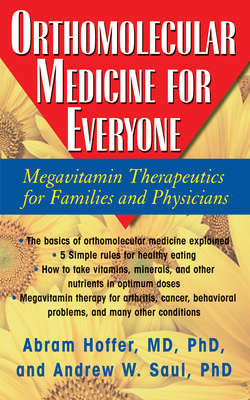Читать книгу Orthomolecular Medicine for Everyone - Abram Hoffer M.D. Ph.D. - Страница 20
THE HARM CAUSED BY OUR MODERN DIET
ОглавлениеThe food industry, most doctors, and most nutritionists advise us there is no harm in eating modern food if our diet is “balanced.” The term balanced meal has been a favorite one used by dietitians for many years. It means that the optimum proportion (balance) of all necessary food components is provided. But it has come to mean something else: most nutritionists, in the name of a balanced meal, consider that even larger quantities of sugar in a meal are fine, provided that it is balanced against some protein, fat, and the essential vitamins and minerals. This leads to the preposterous idea that junk cereal and milk are nutritious, whereas in reality the cereal has diluted the nutritional quality of the milk. Some nutritionists consider the doughnut made from white flour, oil, and sugar plus a tiny quantity of vitamins a good food, presumably because it is “balanced.”
The concept of balance was originally useful, but it has been corrupted by our food technology and no longer serves any useful purpose. However, there is no better word, and we will use it in its original sense—to denote the importance of using optimum quantities of all the essential nutrients. This is best achieved by obtaining these from a variety of foods, which are more apt to satisfy our needs than is a dependence upon any one food.
Food should be balanced in itself, within each meal, and over the entire day. The best way to ensure balance in food itself is to use only whole foods, which nature has already balanced. Balance in a meal is achieved by eating several foods from different groups, such as meats, fresh vegetables, fruits, dairy products, and nuts and seeds. Balance over the whole day is ensured by eating balanced meals every time. Snacks need not be made from a variety of foods, as they are minor components of our diet, but they must be whole foods, not doughnuts, chocolate bars, and other junk.
Clinical nutritionists, orthomolecular physicians, and some clinical ecologists have seen how correcting a patient’s diet leads directly to his recovery. It does not require a major leap in logic to conclude that, had the patient followed the optimum diet all along, the disease would not have occurred.
Modern diets differ from diets we have adapted to in a number of ways. Protein levels, fat and lipid levels, and carbohydrate levels may be too high or too low. This applies to vitamin and mineral levels as well. But it is too simplistic to talk about too much or too little of any food component. One individual can eat only so many calories. If the amount of one is increased, there must be a reduction in the quantity of another. If one increases the protein level, there must be a decrease in fats and carbohydrates. For this reason, studies that take into account only fats and their relation to coronary disease but ignore carbohydrate levels will yield very low correlation, even if there were, in fact, a high association.
Here, we will discuss the most common fault with modern food, and what that fault does to people. This is the low-protein, high-sugar, low-fiber diet that causes the sugar metabolic syndrome.
